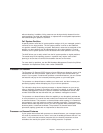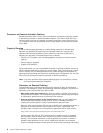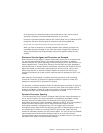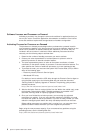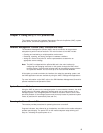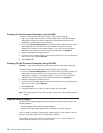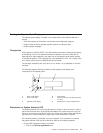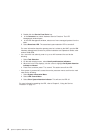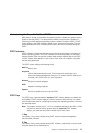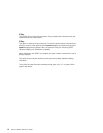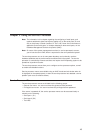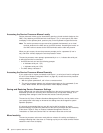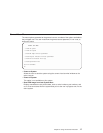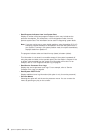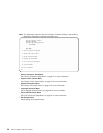
Understanding the Power-On Self-Test (POST)
After power is turned on and before the operating system is loaded, the partition does a
power-on self-test (POST). This test performs checks to ensure that the hardware is
functioning correctly before the operating system is loaded. During the POST, a POST
screen displays, and POST indicators appear on the virtual terminal window. The next
section describes the POST indicators and functions that can be accessed during the
POST.
POST Indicators
POST indicators indicate tests that are being performed as the partition is preparing to
load the operating system. The POST indicators are words that display on the virtual
terminal window. Each time that the firmware starts another different step in the POST,
a POST indicator word appears on the console. Each word is an indicator of the tests
that are being performed.
The POST screen displays the following words:
Memory
Memory test
Keyboard
Initialize the keyboard and mouse. The time period for pressing a key to
access the System Management Services, or to initiate a service mode boot is
now open. See “POST Keys” for more information.
Network
Self-test on network adapters
SCSI
Adapters are being initialized
Speaker
Sounds an audible tone at the end of POST
POST Keys
The POST keys, if pressed
after
the keyboard POST indicator displays and
before
the
last (speaker) POST indicator displays, cause the system to start services or to initiate
service mode boots used for configuring the system and diagnosing problems. The keys
are described below:
Note: The program function keys (F1-F12) on a keyboard attached to the HMC or USB
card are not used and will be ignored. After the keyboard POST indicator
displays, you must use the numeric number keys to enter input.
1 Key
The numeric 1 key, when pressed during POST, starts the System Management
Services (SMS) interface.
5 Key
The numeric 5 key, when pressed during POST, initiates a system boot in service mode
using the default service mode boot list.
Chapter 2. Using the Eserver pSeries 690 13



